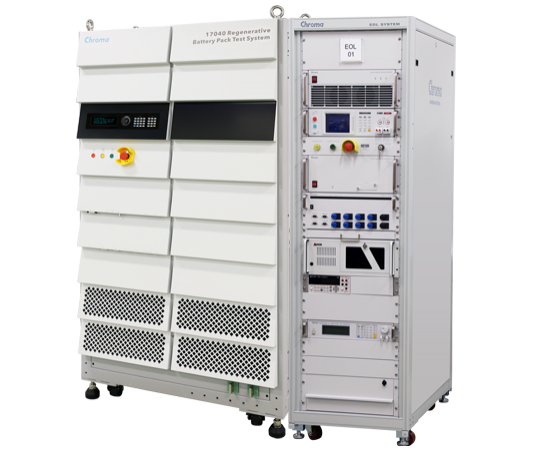

Chroma A223806 follows the DVI (Digital Visual Interface) 1.0 specification and uses Transition-Minimized Differential Signaling technology to ensure the stability of high-speed serial data transmission. The single link supports ranges from 25MHz to 165MHz, and the Dual Link can support pixel rates above 165MHz, reaching up to 330MHz.
HDCP (High-Bandwidth Digital Content Protection) prevents illegal copying of data as it is transmitted through the interface. The A223806 follows the HDCP 1.0 specification. Its built-in dedicated HDCP image test function can automatically put the HDCP’s settings into effect. Test results can be output directly on the screen of the DUT, enabling users to instantly verify whether the HDCP has booted correctly and view error messages for debugging work.
Chroma A223806 supports high resolution DVI Dual Link HDCP testing, with QXGA (2048 x 1536) as the maximum supported resolution.


With regards to RGB output of the VGA (Video Graphics Array) analog signal, the A223806 follows the VESA VSIS v1.1 specification and conforms to RS-343a, RS-170 and VESA signal standards, with a pixel rate of 300MHz and WQXGA (2560×1600) as its maximum supported display resolution.
EDID (Extended Display Identification Data) is a VESA-defined data standard for identifying DDC displays. The A223806 directly reads, compares and writes to the EDID register inside the display through I2C, which includes the supplier's information, image size, color setting, and frequency range. At the same time, users can edit the EDID through an external PC's software interface and display the complete analysis results.

Chroma A223806 can display the DUT’s HDCP compliance test on the On Screen Display in real time and update AKSV, BKSV, TX_Ri, and RX_Ri data every 2 seconds, allowing the user to verify the connection and quickly view the results of the changes in the Master and Slave testing process.


*Picture shows maximum output voltage.
Chroma A223806 follows the VESA VSIS 1.1 specification. The RGB output uses a high-order 12 bits digital/analog converter (DAC) to achieve applications beyond the True Color 10-bit specification. The user can customize the Video Level, White Level and Sync Level test signal voltage values. The minimum editable unit of the voltage value is 1 mV, which allows setting up a variety of testing values.
- Video Level editable range: 0 ~ 1000 mV
- White Level editable range: 0 ~ 1200 mV
- Sync Level editable range: 0 ~ -500 mV
The A223806’s built-in audio generator supports independent editing of the two audio channels. The user can set the volume range from 0V to 2V with a minimum unit of editable voltage of 50 mV. The tone frequency ranges from 10 Hz to 20 KHz with a minimum unit of editable audio value of 1 Hz. Combined with the Mute option, this module offers a variety of audio testing applications.

Chroma A223806 complies with RS-343a and RS-170 signal standards and can enable or disable 7.5 IRE, using the Pedestal Level as a background brightness test.


Chroma A223806 provides DVI and VGA standard signal output, and features a built-in OSD (On-Screen Display) function that allows the user to conveniently confirm which signal is being output at which time, avoiding confusion. The OSD’s position, size and color shade can all be edited according to the user's preference.
The Scrolling function enables dynamic image testing, allowing users to move the test screen up, down, left, right and diagonally. By manipulating the direction and speed of the screen’s frames and pixels, users can directly test the display’s image persistence.

With Chroma A223806’s built-in Cursor function, the user can operate the 2238 UI, using the up, down, left and right arrow keys to select the actual pixel and dot coordinates (x,y) and RGB parameters to be displayed in real time. In so doing, the user can quickly inspect the screen’s image quality by checking for defects such as dead pixels, lines or otherwise bad areas.

The A223806 features a powerful built-in graphics engine that renders the image dot by dot at a 1:1 ratio without additional image processing, providing a complete and undistorted image on the screen.

Chroma A223806’s built-in Luminance Adjust testing provides a customizable 0-255 (8 bit) brightness range (Lumi-level) with a minimum editing unit of 1. The user can inspect the DUT’s brightness and color specifications in real time by enabling or disabling Luminance Adjust and by adjusting brightness using the front panel shuttle knob, greatly improving testing efficiency.


The VESA VSIS 1.1 specification requires a response time of less than 1.6 nanoseconds (ns) for the rise/fall of the test signal. The Chroma A223806 screen output test signal’s rise/fall time meets the specification standards, ensuring signal integrity by testing at the highest speed point frequency.
Composite signals can be turned on or off according to user needs, or set to any Sync on RGB setting.


Chroma 2238 Video Pattern Generator integrates complete executable programs with timings, test patterns, and audio that can be configured freely according to testing needs. Not only does the equipment carry up to 2000 timing patterns and 5000 images, users also can add their own test patterns to meet a large variety of test specifications.
The built-in resolution test chart can accurately indicate the correct scale according to different Timings. In addition to geometric shapes and aspect ratio tests (4:3, 16:9), other test patterns such as Color Bar and Grayscale are also included. With these test patterns, users can easily determine the display's imaging quality and simultaneously monitor the HDCP and EDID execution status on the on-screen display, especially useful for R&D, production and QA purposes.


The A223806 is a reliable and impartial signal module that delivers best-in-class image quality inspections and stringent signal integrity tests.
High conductivity beryllium copper improves the conductivity between components and reduces electromagnetic radiation leakage interfering with the DUT, in compliance with CE/EMC (Electromagnetic Compatibility) standards.








